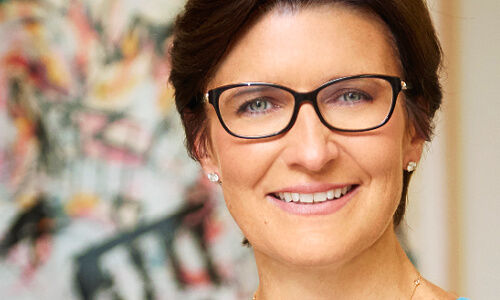Is the first woman to run a big American bank a major win for diversity? A huge step for womankind is a small one for Wall Street, writes finews.com's Katharina Bart.
«Congratulations to Jane Fraser, the next CEO of Citi and a pioneer in becoming the first woman to lead a major U.S. bank,» David Solomon wrote on Linkedin. Fraser, the 53-year-old Scot who will take over at Citi in February, deftly returned the compliment to the boss of Goldman Sachs, where she began her career as an M&A analyst in 1988.
The lavish Wall Street praise masks the fact that Fraser's appointment isn't necessarily as massive win for diversity as Solomon would lead you to believe. Companies care about diversity not because they are altruistic but because of more tangible things like political pressure, and reputation and compliance factors.
Bravado and Swagger
There is a reason even Solomon is excited about Fraser’s ascension: she has the type of chutzpah and swagger that Wall Street loves. At just 26, she famously began her career at McKinsey by insisting she report directly to the banking practice head, according to the «Financial Times».
Fraser isn’t that different from what we’ve seen so far: she’s cycled through the institutions of higher learning (Cambridge economics, Harvard Business School) as well as business (McKinsey, Goldman Sachs) that Wall Street adores. «Unapologetically ambitious» according to the pink paper, she excels at the kind of quick-pace changes and thinking that McKinsey makes its money with.
Women In The Wings
Wall Street actually loves women – Fraser may have gotten there first, but the next women to ascend are waiting in the wings. Marianne Lake and Jennifer Piepszak at J.P. Morgan, ex-Morgan Stanley top executive Ruth Porat (now at Google), Dina Powell at Goldman Sachs, and Dawn Fitzpatrick at George Soros’ family office and previously UBS, to name just a few.
They all have the chops: Fraser ran Citi’s private bank for the ultra-rich from London until Corbat summoned her to St. Louis to run a mortgage unit. She's been at Citi long enough to have internalized «marching orders» and headed for the U.S. early enough – 2013 – to build her network at the mother ship.
«The Way We Think Around Here»
Wall Street ironically has been slower to adopt the simpler argument for diversity (namely, that it drives performance). In a broader sense, Fraser isn't enough: The next wave of inclusivity will look at breaking up «the way we think around here»-style cultures.
It will include concepts like intersectionality, and desperately needs to integrate people from diverse racial, social, and educational backgrounds as well as cognitive types. In particular, finance could do with more technology and computer science graduates – it continues to have trouble competing with Silicon Valley in attracting them.
Dancing With Abandon
At Citi, Fraser didn't necessarily stand out as an innovator in retail, where she spent the last year (to be fair, detractors note retail banking's last innovation was the ATM). Fraser is certainly a live-wire, but she is as safe a bet as the bank can make right now.
It takes all the elements to make for diversity and inclusiveness to take hold in an organization, and it isn’t done overnight (which is why Fraser’s initial steps and appointments in particular are eagerly awaited).
As a 2018 Linkedin study put it, «diversity is being invited to the party, inclusion is being asked to dance, and belonging is dancing like no one’s watching.» It is this sense of belonging that fosters psychological safety for employees be their best selves at work – what Fraser can pave the way towards for other women.



































